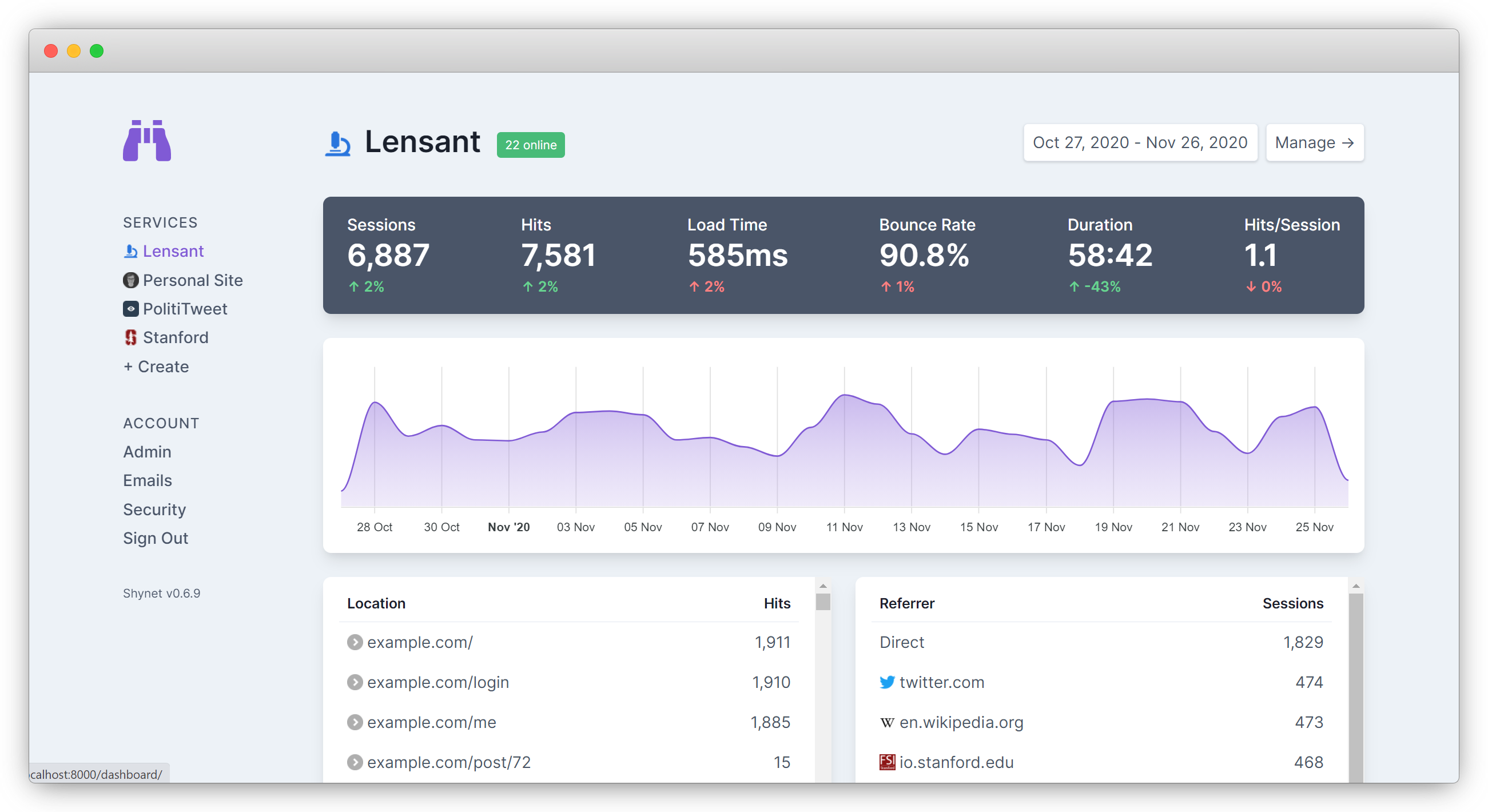Web Analytics: What, Why and How

Web analytics is the process of collecting, analyzing and reporting data about the behavior and performance of your website and its visitors. Web analytics can help you understand how people find, use and interact with your website, and what you can do to improve their experience and achieve your goals.
If you're visiting this site, your site usage is also being collected - such as if you've only come here once, or went forward and visited any other pages. It's also useful to know how a particular post performs, and where the traffic is coming from.
Why You Should Use Web Analytics
Web analytics can provide you with valuable insights that can help you:
- Measure the effectiveness of your website and its content, such as how many visitors you have, how long they stay, what pages they view, what actions they take, etc.
- Optimize your website and its content, such as how to improve your design, layout, navigation, usability, accessibility, speed, etc.
- Test different versions of your website and its content, such as how to compare and evaluate different headlines, images, colors, calls to action, etc.
- Segment your visitors and their behavior, such as how to identify and target different groups of visitors based on their demographics, interests, preferences, etc.
- Personalize your website and its content, such as how to tailor and customize your website and its content to suit the needs and expectations of different visitors.
- Convert your visitors and their behavior, such as how to increase the number of visitors who perform a desired action, such as subscribing, registering, buying, etc.
What Kind of Data is Usually Gathered and How to Use Them
Web analytics can gather various kinds of data about your website and its visitors, such as:
- Traffic data, such as how many visitors you have, where they come from, how they find your website, what keywords they use.
- Engagement data, such as how long visitors stay, what pages they view, how often they return, what content they consume.
- Conversion data, such as how many visitors perform a desired action, what actions they take, what triggers them, what barriers they face.
- Quality data, such as how satisfied visitors are, how loyal they are, how likely they are to recommend your website, what feedback they give.
You can use this data to:
- Analyze the trends, patterns and correlations in your data, such as how your traffic, engagement, conversion and quality metrics change over time, across different segments, etc.
- Report the results and findings of your analysis, such as how your website and its content perform against your goals, benchmarks and expectations, etc.
- Act on the insights and recommendations of your report, such as how to implement changes, improvements and experiments on your website and its content, etc.
What are the Most Popular Web Analytics Tools and What are Their Pros and Cons
There are many web analytics tools available in the market, each with its own features, benefits and drawbacks. We'll primarily discuss free or nearly-free (eg. usually paid, but free if you host it yourself).
Some of the most popular ones are:
- Google Analytics, which is a free and powerful web analytics tool that offers a wide range of features, such as traffic, engagement, conversion and quality data, segmentation, personalization, testing, reporting, etc. However, Google Analytics is not a privacy-respecting tool and is bundled with a large script. Because of that, is has some - such as requiring a cookie consent (GDPR) from your visitors. It's also uneasy that it's collecting and sharing your data with Google and other third parties, and has a complex and overwhelming interface and too bloated features that most site owners absolutely do not need.

For this reason, here are some very nice privacy-respecting analytics (with no cookies!)
- Umami, which is a simple and privacy-friendly, open-source web analytics tool that offers a minimalist and open-source alternative to Google Analytics, such as traffic, engagement and conversion data, reporting, etc. However, Umami also has some drawbacks, such as requiring self-hosting, having a limited feature set, lacking some advanced features, such as segmentation, personalization, testing, quality data. However, you're in complete control and you own that data.

- Plausible, which is another simple and privacy-friendly, open-source web analytics tool that offers a lightweight and easy-to-use alternative to Google Analytics, such as traffic, engagement and conversion data, segmentation, reporting etc. It also has an integration with Google Search Console, which shows what keywords were used to land on your page. However, Plausible is also has some drawbacks, such as being a paid service (but completely free if you host it yourself), and as a similar feature set as Umami.

- Matomo, which is a comprehensive and privacy-respecting open-source web analytics tool that offers a full-featured and self-hosted alternative to Google Analytics, such as traffic, engagement, conversion and quality data, segmentation, personalization, testing, reporting, etc. Out of all these tools, Matomo is the most feature packed. It also has an option to be cookieless. However, Matomo also has some drawbacks, such as being a paid service OR requiring self-hosting. Its featureset may also be its biggest weakness - it requires care and effort to effectively use it and most site owners will most likely not use all of its features. It's an amazing tool nonetheless and a good competitor to Google Analytics.

- Shynet, which is a modern and privacy-conscious, open-source web analytics tool that offers a sleek and self-hosted alternative to Google Analytics, such as traffic, engagement and conversion data, segmentation, reporting, etc. However, Shynet also has some drawbacks, such as being a paid service, requiring self-hosting, having a limited feature set, lacking some advanced features, such as personalization, testing, quality data, etc.

- CloudFlare Web Analytics, which is also a privacy-respecting web analytics tool. It's probably the easiest of all to setup if you own a domain on Cloudflare and proxy your traffic through it - no setup required on your end and you get instant analytics. It also comes analyses robot traffic. It's a bit feature lacking compared to the previously mentioned tools, but it's a great start. In fact, as of the writing of this post, Wirekat uses both Plausible and Cloudflare Web Analytics.

How to Choose the Best Web Analytics Tool for Your Website
There is no one-size-fits-all solution when it comes to web analytics tools. The best web analytics tool for your website depends on various factors, such as:
- Your goals, such as what you want to achieve with your website and its content, what metrics you want to measure and optimize, etc.
- Your budget, such as how much you are willing and able to spend on a web analytics tool, whether you prefer a free or a paid service, etc.
- Your preferences, such as how much you value your privacy and your visitors’ privacy, how much you trust and rely on third parties, how much you like or dislike cookies, etc.
- Your skills, such as how comfortable and confident you are with web analytics, how much time and effort you can devote to web analytics, how much technical knowledge and expertise you have, etc.
Based on these factors, you can compare and evaluate different web analytics tools and choose the one that best suits your needs and expectations.

How to Get Started with Web Analytics
Installing analytics usually involves simply dropping a simple script to your site's HTML.
Once you have chosen a web analytics tool for your website, you can get started with web analytics by following these steps:
- Install the web analytics tool on your website, such as by adding a code snippet, a plugin, a tag, etc.
- Configure the web analytics tool on your website, such as by setting up your goals, segments, filters, etc.
- Collect the data from your website and its visitors, such as by tracking their behavior, performance, feedback, etc.
- Analyze the data from your website and its visitors, such as by exploring, visualizing, interpreting, etc.
- Act on the data from your website and its visitors, such as by implementing, testing, improving, etc.
Already use Cloudflare? How to Use CloudFlare Web Analytics with no setup.
If you already have a domain from CloudFlare, you can use CloudFlare Web Analytics as a simple and free web analytics tool that requires no setup. CloudFlare Web Analytics can provide you with basic traffic and engagement data, such as page views, unique visitors, bounce rate, referrers, etc. CloudFlare Web Analytics does not use cookies or collect any personal data from your visitors, so you do not need to worry about GDPR compliance.
To use CloudFlare Web Analytics, you just need to enable it from your CloudFlare dashboard, and you will see a web analytics tab where you can view your data. You can also customize your web analytics settings, such as choosing your time zone, filtering out bots, etc.
However, if you want more data and features, you may want to consider other web privacy-respecting analytics tools, such as Umami or Plausible.
Self-hosting your own Analytics tool (and own your data!)
We'll use Umami and Plausible as an example - both nearly identical tools. Give them both a try and see which one sticks. Or go big with Matomo!
Umami and Plausible are two web analytics tools that offer privacy-first analytics that do not need any cookie banners. Umami and Plausible can provide you with more data and features than CloudFlare Web Analytics, such as conversion and quality data, segmentation, reporting, etc. Plausible Analytics also has Google Search Console integration, which can help you understand how your website ranks on Google and what keywords drive your organic traffic.
Both of these services offer their own cloud offering to fund themselves, so if you'd rather pay a small fee to own your Analytics and have all the work done for you - it's an option!
For selfhosters? To use Umami or Plausible Web Analytics, you need to install them on your own server or use a hosted service/VPS (both projects offer a Docker compose file as well, if you fancy containerizing them). You also need to add a code snippet to your website to track your data.
Configuring alerts is also something you have to do yourself - such as weekly/monthly emails sent via SMTP or a mail relay like Mailgun.

Umami and Plausible Web Analytics are good options if you want more data and features than CloudFlare Web Analytics, without sacrificing your privacy or your visitors’ privacy. If you already have CloudFlare proxying your requests, there's no reason to turn their analytics off - more data! For example, here at Wirekat we use both Cloudflare and Plausible in conjunction.
Conclusion
Web analytics is a powerful and useful tool that can help you improve your website and its content, and achieve your goals. It's not a magic bullet that can solve all your problems - but it helps you take the necessary actions to grow.






